November 4 - 10, 2012: Issue 83
SS Florrie
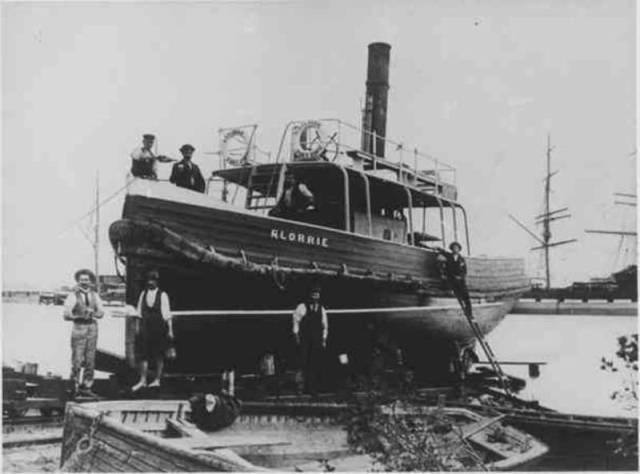 One of Brisbane Water’s most prolific shipbuilders was Rock Davis who was born at sea in July 1833.
One of Brisbane Water’s most prolific shipbuilders was Rock Davis who was born at sea in July 1833.
Ferries, schooners, steamships, cutters and ketches were launched from the Davis shipyard at Blackwall (near Woy Woy) totalling 168 vessels built as recorded. One of these, launched in 1879, was the Florrie, a 32 ton steam ship capable of carrying 150 passengers with dimensions of 55.50 x 14.00 x 5.40 (feet).
Originally owned and run by Mr Davis she was contracted to be the Royal Mail Service for Brisbane Water. This service commenced on August 2nd 1879 and within a few months the Florrie and her connecting Mail service was owned by Charles Edward Jeanneret.
PITTWATER. The Royal Mail S.S. "FLORRIE, under contract with her Majesty’s Government, will run as follows, commencing on SATURDAY, 2nd August. 1879:-From Gosford Wharf, on THURSDAYS and SATURDAY'S, at 8 a.m., touching at Blackwall, and arrives at the head of Pittwater, at about 11 a.m.; from Brisbane Water, passengers will be conveyed by waggonette leaving Pittwater immediately after the arrival of the Mail steamer from Gosford ; and passengers from Sydney will be conveyed by waggonette leaving Post-office, Manly, at 8.20 a.m. for Pittwater, and thence by Mail steamer to Brisbane Water. The steamer conveying the Mails from Sydney leaves Circular Quay at 7 a.m. ROCK DAVIS.Advertising. (1879, August 2). The Sydney Morning Herald(NSW : 1842 - 1954), p. 1. Retrieved from http://nla.gov.au/nla.news-article13448783
The first run is described in:
THE NEW MAIL ROUTE TO BRISBANE WATER.
(FROM OUR OWN CORRESPONDENT.)
GOSFORD, SATURDAY.
The day on which the mail steamer Florrie made her first trip, as reported in your issue of the 5th instant, was in every sense delightful. The Gosford Broadwater, Broken Bay and Pittwater seemed like a sheet of glass. The Sydney mails were landed at Gosford at 2 p.m., thus taking seven hours in transit from Sydney, whereas 19 1/2 hours are occupied by the Peate's Ferry and Devil's Elbow route.
At the termination of the voyage, Mr. Thomas Donlon, of Gosford, called together the ladies and gentlemen who had made an excursion to Pittwater and back, and addressed them. Mr. Donlon said that it would not be right to separate without saying a few words about the pleasant and happy day they had spent. He said that he had for very many years been endeavouring to get the residents to combine for the purpose of establishing what had that day been done by one man. Mr. Donlon then called on
Mr. EDWARD REEVE, Police Magistrate, who said that he had spent many bright and pleasant days amongst them since he came down to their extensive and picturesque district, but no brighter or pleasanter day could not remember than that on which the " new overland route," via Pittwater and Manly, had been so happily and so successfully inaugurated.
It was a day, in every sense of the word, delightful and auspicious for on board that beautiful little screw steamer specially built for mail and passenger service, and exactly adapted to their urgent need they had not only had a most agreeable opportunity of feasting their eyes on the glorious and varied scenery of the Gosford Broadwater and of Pittwater to the greatest possible advantage, but they had had absolute occular proof of the swiftness, comfort, and other excellent qualities of their new mail steamer qualities, by which they were ensured it quick, safe, and delightful passage from Gosford to Sydney and book, in all weathers, and without going out to sea(cheers) and had also obviously secured for them is much more expeditious, regular, and equally sure transmission of letters and newspapers.
Such was the speed of the Florrie such the superiority of the new overland route, and the perfection of all its iippointuioutB-that there was no conceivable reason (that he could see) that letters, posted at Gosford early in the morning, might not be expected to arrive in Sydney by the Manly boat in time for the 4 o'clock delivery. Com-ment on the magnitude of such an advantage to the people of the Brisbane Water district, and, indeed, to all whose interests were identical or connected therewith, must, he thought, be utterly superfluous. The new overland route, via Pittwater and Manly Beach, would, he felt confident, become the favourite route. (Cheers.)
He trusted that the opening of the new overland route (which by the way, had met with much covert and open opposition, an opposition strange and inexplicable if disinterested, but an opposition bravely withstood and triumphantly surmounted) would prove to be the dawn of a new and better era for their district, an earnest of greater prosperity and material and social progress.
Already they had, at a comparatively recent date, received from the Government the grand and almost indispensable help of telegraphic communication, an advantage it was impossible to overestimate, while in their other absolutely indispensable means of communication - their roads-there was, he felt happy to say, fair promise of considerable improvement. And then, above all they had a railway in a distant prospect, for the union of the two great trunk lines, the Northern and the Western, could not long be postponed, and must inevitably pass through their district, and in its passage it could not but-incidentally, as it were tend to foster their chief industries and to develop their main resources, particularly the timber trade in all its branches But until that time arrived, this instalment now before them-a commodious, expeditious, and thoroughly practicable route to Sydney, via Pittwater and Manly (for travellers who detested and dreaded the risk and discomfort of a sea voyage, and for the quick and sure transmission of mails) was not to be surpassed, and must be hailed with joy as the pledge of more to turned He had been much struck when he first came down to Brisbane Water, with the peculiar isolation of the district, the difficulty, nay, the impossibility, at times of getting out that many directions, whether by the long tedious, and difficult journey inland, or by the voyage round by sea.
This inaccessibility of Brisbane Water was a very curious feature, and had been its greatest disadvantage. In some weathers it had been, as they all had good reason to know, impossible to get away at all, but that grave inconvenience was now a thing of the past. He was proud to state that the emancipation from their state of thraldom-he could term it nothing else - came to them from a Brisbane Water man, one whom he was glad to call his friend and who was the friend of everybody there.
He called up in them all to give three cheers for Mr Rock Davis, and for the royal mail steam-ship Florrie. The call was very heartily responded to by all present Three ringing cheers thus terminated the inauguration of " The New Overland Route ".
The weather on the day of the second trip (Thursday) was the opposite to what it was on the day of the first. It had been blowing a hurricane from the south-east and the weather was very tempestuous the Home nevertheless, left the Gosford wharf at the appointed time and crossed the bar bravely, and returned, delivering mails and passengers 2 1/2 hours in advance of contract time. The arrangements are so complete, so perfect, that, humanly speaking, there is hardly a possibility of a hitch occurring.
The mail coach from Manly and the mail steamer from Gosford arrived at the head of Pittwater at nearly the same moment. Had the steamer been unable to cross the bar with the inward mails, the mail bags would have been conveyed overland from Blackwall to Patonga situated on the north side of Broken Bay and thence to the head of Pittwater by a four-oared whaleboat stationed and kept on purpose to meet emergencies. Had the mail steamer been unable to recross the bar on her return trip, the mail bags would have been landed at Patonga, conveyed overland to Blackwall, where the contractor had another boat with steam on and ready at a moment's notice to carry mails and passengers to their final destination. THE NEW MAIL ROUTE TO BRISBANE WATER. (1879, August 13). The Sydney Morning Herald (NSW : 1842 - 1954), p. 6. Retrieved from http://nla.gov.au/nla.news-article13445099
Another newspaper record states:
It will be welcome news to pleasure-seekers (says a Correspondent) that a trip to the beautiful Rhine-like scenery of the Hawkesbury, via Manly Beach, may betaken with reasonable comfort, regularity, and cheapness. The arrangement is this. You take the first boat to Manly, thence by coach to Pittwater, where the pretty little steamer " Florrie " will be ready for a speedy and delightful run up the River to Wiseman's Ferry. Here you may pause to consider whether you will proceed to Windsor, accept hotel accommodation on the spot for the night, or camp aboard the steamer, in the morning you may return to Broken Bay, and Pittwater to Manly, and arrive in Sydney by the late Manly steamer. Who could wish to crowd into two days more of real enjoyment And there is but little doubt that the enterprising gentleman who has offered so many advantages to excursionists will obtain a good share of patronage. If the Postmaster-General would arrange to have the various mails on the river delivered by steamer, a regular weekly communication between. Wiseman's and Sydney, via Manly, would be an established fact, and a great boon, alike to the river residents and Sydney seekers of recreation and pleasure. ' NEWS OF THE DAY. (1879, October 24). The Sydney Morning Herald (NSW : 1842 - 1954), p. 4. Retrieved from http://nla.gov.au/nla.news-article13446325
By November 1879
STEAM To HAWKESBURY RIVER PERSONS desiring to see the BEAUTIES OF THIS RIVER will have an opportunity of doing so on TUESDAY next, by the steamer PELICAN leaving King-street at 7 .30am, and joining the Florrie at Barrenjuee Or by Manly steamer from Circular Quav at 7 15, and overland to Pittwater If booked on the previous day. The Steamer FLORRIE will proceed to W ISEMANS FERRY fifty miles up the river, where good Hotel accommodation can be had. Early on WEDNESDAY MORNING she will proceed on TOWARDS WINDSOR for a considerable distance and then return to Pittwater in time to take coach to catch last Manly steamer. Fares-20s return coach -4s each way. C E. JEANNERET. King-street Wharf. Advertising. (1879, November 7). The Sydney Morning Herald(NSW : 1842 - 1954), p. 1. Retrieved from http://nla.gov.au/nla.news-article13445918
Charles Edward Jeanneret is the gentleman responsible for the building of what we now call the Newport Arms Hotel and the jetty or wharf that allowed passengers on to land in Pittwater. Some sources state a disagreement or a refusal to allow Mr Davis to use this wharf were resolved in Mr Jeanneret purchasing the Florrie. Other sources point to her only ever connecting with other mail steamers from Sydney at the head of Barrenjoey (the custom’s wharf) or with vehicles bringing mail overland into Pittwater. Most of these terminated at Newport due to the condition of the tracks into Pittwater which were even worse or non-existent further north then this. Either way, Mr Davis seemed happiest building boats while Charles Jeannerett, who must rank among Australia’s pioneers as a gent who invested and built much infrastructure, was a keen ferry procurer.
Born in Sydney in 1834 the eldest son of Dr. Henry Jeanneret he grew up on Flinders Island, then a protectorate of Tasmania, where his father had the title of ‘Commandant’ as well as ‘Superintendant of Aborigines’. Here he learnt navigation and seamanship. After stints at sea, sailing to England at 18 and on the goldfields in Bendigo he returned to Sydney in 1850, joined the Bank of New South Wales and married Julia Anne Bellingham in 1857, settling at Hunter’s Hill. They had eight sons and two daughters, the youngest of these, born in 1879 was named Florence Annie. Besides being responsible for the building of many lovely houses at Hunter’s Hill and elsewhere, being attributed with a great avenue of trees in this suburb and the construction, later, of a tramway, C E Jeanneret heard the complaints of fruitgrowers in this area on the then existing ferry service for their produce down the Parramatta River to Sydney markets.
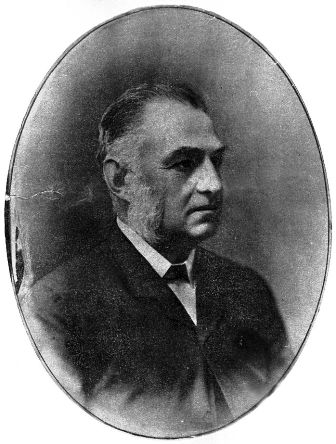 Reminiscences. The Late Mr. Jeaneret. History of the Parramatta Steamer Company.
Reminiscences. The Late Mr. Jeaneret. History of the Parramatta Steamer Company.
The late Mr. Alderman Jeanneret's career had an important bearing in the development of the passenger traffic on the Parramatta River and elsewhere. The original proprietors of the Parramatta steamers were Mr. E. D. Manning, Sir William Manning, Mr. J. S. Mort, Mess.rs. J. and W. Asyrnes, and it was about 30 years ago that Mr, Jeanneret came upon the scene and that his influence was felt in connection with the river traffic. At that time the Hunter's Hill people expressed great dissatisfaction with the arrangements of the original Parramatta Steamship Company, and this culminated in Messrs. Jeanneret, Joubert and others running a small steamer called the' Tsabel’ from Hunter’s Hill to Sydney. Success attended the venture, and, soon after, the s.s. Adelaide, procured in Melbourne, and engined in Sydney was added to tho service. The enterprising owners then floated a company in opposition to the old company. Almost the whole of the fruitgrowers of the Ryde district, from those at Ermington to those of Hunter's Hill took tip shares in the company to the extent of £5 and under. Mr. Jeanneret was unanimously selected as Manager, a position for which he proved himself eminently fitted. The two companies now entered into a keen competition, with the usual result that both lost heavily, and in less than two years there was an amalgamation, Mr. Jeanneret being selected as manager of the combined fleets. Soon after the amalgamation, the members of the old company disposed of the whole of their shares in the boats, and the new company were therefore left masters of the situation. Owing, however, to the heavy expenses, incidental chiefly to the working of the old steamers, whose earnings did not give an adequate return for the outlay, the victorious company found after a time that it could not meet its liabilities. Tenders were invited for the purchase of the fleet, which was sold to the highest bidder — the energetic and enterprising C.E. Jeanneret. He continued running the steamers successfully, the time proving exceedingly opportune for the venture. Those were the good old times when railway construction was in full swing, and large sums of money were being expended in the building of bridges, so that traffic on the river was very considerable. He continued the service for many years at a profit, and added considerably to the fleet both by purchases and the building of new steamers, bringing the number of vessels in the service up to 20. It was he who built the Halycon, Eagle, Eclipse, Nautilus, Osprey, Neutral Bay and, lastly, the Pheasant.
He sold three or four of his steamers to the Adelaide Company (incorrect; see further down 1.). Of the 20 vessels in his service half-a-dozen were employed on the Parramatta River, the others running to Gosford, Neutral Bay, Iron Cove, Hawkesbury River, etc. It was the late Mr.' Jeanneret who opened up the Iron Cove service and also the service to and from Woolwich.
Another boat he built was the s.s. Gosford which was afterwards sold at a satisfactory figure. During the good times an English syndicate made an offer for the purchase of Mr. Jeanneret's entire fleet, and he went to England in 1890 to treat with the syndicate. The result was that he sold out, severing entirely his connection with the service which he had worked up to a high state of proficiency. He made his home at Hunter's Hill, which he regarded as ' the apple of his eye ' from the time he first saw it. He was always a shrewd business man, and of him it might almost be said that he ' made Hunter's Hill.' He built a great many villa residences on the Hill; in fact, no single individual has spent so much money in property in that borough as he. It was due to his influence that the Post and Telegraph offices were built at Hunter's Hill, and they are certainly a credit to the place. In conclusion, it may be added that of the officers or men employed by the old Parramatta company that opened up the river service, the genial and ever-obliging Captain Mance is the only one now remaining in the service. He is known as tho Commodore of the fleet, a distinction to which he is well entitled. Reminiscences. (1898, September 10). The Cumberland Argus and Fruitgrowers Advocate(Parramatta, NSW : 1888 - 1950), p. 6. Retrieved from http://nla.gov.au/nla.news-article85845277
Extending his growing fleet’s services to Pittwater, the Hawkesbury River and ensuring these were used on the days and times when they weren’t scheduled for the Royal Mail run would have seemed logical to such an entrepreneur. The Florrie became a fixture on Pittwater and the Hawkesbury, bringing holiday day trippers and picnickers to Pittwater. It was the Florrie who transported the official party to the Customs wharf to lay the foundation stone for Barrenjoey Lighthouse;
LAYING the FOUNDATION-STONE of a NEW LIGHTHOUSE at BARRENJOEY
(By OUR OWN REFORTER.)
The ceremony of laying the comer-stone of the new lighthouse at Barrenjoey was performed on Thursday, by Miss Rosa Barnet, daughter of the Colonial Architect, and everything connected therewith passed off in a highly satisfactory manner. ...
The contractor issued invitations to several ladies and gentlemen to be present, and among those who responded there to were Messrs. J. S. Farnell, E. Greville, and J.Hurley, M.'sL.A., Captain Hixson, and Messrs. Thompson, Whiting, Jeannerett, Wilson, Walker, Barnet and Spencer. Mrs. and Miss Barnet and several other ladies were also present. The party left the Circular Quay at a quarter past 7 o'clock, in the steamer Emu (Jeanneret owned), for Manly Beach, whence they were to go overland in vehicles. The morning was somewhat cloudy, and the harbour overspread with a fog. Before the steamer reached Manly, however, the fog had entirely disappeared, and the sun made an effort to beam forth through the somewhat'. sombre sky.
Arrived at Manly, three vehicles were found in waiting, which were quickly filled, and a start was then made for host Cohen's hotel, on reaching which it was announced that breakfast was awaiting us. The early hour at which most of the party had been compelled to shake off dull sleep, in order to be in time for the boat and the trip down the harbour, had rendered it quite unnecessary that the announcement should be repeated. Accordingly, we immediately wended our way upstairs to the dining-room, where a really excellent breakfast had been provided. Good humour reigned supreme.
After breakfast we again took our seats in the vehicles-the ladies in one and the sterner portion of humanity in two others, and made a start on our journey proper, the vehicle containing the ladies going on first. The road for some distance, after leaving Sydney's favourite marine suburb, was dull and uninteresting ; but as we went on the features of the landscape changed, and the level tracts covered with stunted timber and brushwood gave place to undulating country, with trees of large dimensions, though evidently not of much commercial value. One conspicuous features was the number and great variety of ferns, which, after the shower of rain, looked beautiful. I almost forgot to say that just after leaving Manly rain began to fall, but it was not heavy and only lasted a short time, so that macintoshes and umbrellas were speedily dispensed with. The sun then came out in full force, and the remainder of the day, with the exception of one very slight shower, was beautifully warm.
Until Narrabeen Lagoon was reached, the journey was not productive of anything worthy of record beyond the fact that every one seemed to be m the best of spirits. The passage of the lagoon was, however, rather exciting to most of the party, from the fact that hints bad been thrown out beforehand that the horses might jib, and leave us in the middle of the water before it was accomplished ; that the water was deep, and the swerving of the horses to either side might be the means of increasing the applications for space at Haslem's Creek. Notwithstanding our “critical position" the utmost coolness was observed; whilst we were crossing the ladies were assured by one gentleman in our vehicle of their perfect safety by the fact of so many " life-boys" bring close to them. A merry peal of laughter was the only reply. Frequent inquiries were made of the ladies as to whether .' their feet were wet yet," as the bottom of the body of their vehicle seemed to be immersed; and it was evident that if such a calamity had happened several of our party were prepared to go to any extreme to avert its repetition. However they were not called upon to exercise their undoubted courage, or manifest other than in the way mentioned, their chivalric devotion. We got through the lagoon in safety.
The remainder of the road-or rather track-was in fair order, and we made respectable progress. As we neared the end of our journey we gradually ascended a hill, on reaching the top of which a magnificent panoramic view burst upon us. At our feet lay the waters of Broken Bay, or rather that portion of it termed Pitt Water. For miles it stretched towards the entrance to the mouth of the Hawkesbury while, on either side, bold headlands, crowned to their summits with timber, and looking like great sentinels, rose from the water's edge. Expressions of wonder at the beauty of the scene wore heard on all sides, and the fact that this lovely place is so little known to denizens of the metropolis was freely commented on.
But our steamer, the good ship Florrie, owned by Mr. Jeannerett, is in waiting, lying alongside a jetty at the head of the bay, so we immediately embarked for our destination, Barrenjoey, a distance of about eight miles. On the opposite side of the bay is New Port, the property of Messrs. Mills and Pile and Mr. Jeannerett, who are erecting an hotel, for the accommodation of visitors to the bay. It will have a fine situation and when the place becomes more widely known, as it deserves to be, the hotel will doubtless be largely availed of. The trip down the bay was greatly enjoyed and every point of interest critically scanned.
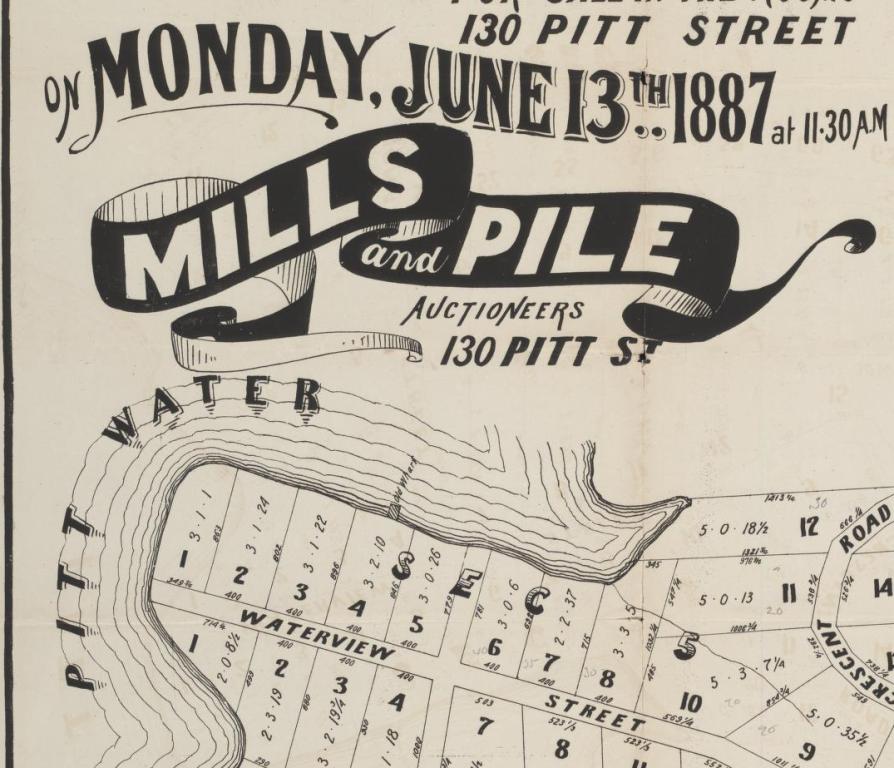
Mona Vale, Pitt Water [i.e. Pittwater] [cartographic material] / for sale in the rooms, 130 Pitt Street on Monday June 13th 1887 at 11.30 a.m., Mills and Pile, auctioneers, 130 Pitt St. MAP Folder 103, LFSP 1553. Courtesy National Library of Australia.
Shortly before 1 o'clock, or about an hour after leaving the wharf, we steamed opposite the jetty at the Customs-house landing, a short distance away-the depth of water not permitting us to go alongside, and soon Mr. Black, with his whaleboat, came along-side. The whole of the party were then transferred to her, and safely taken on shore, while the provisions, ice., were conveyed in another boat.
The arrangements-for carrying on the works seem to meet all the requirements. Houses for the accommodation of the workmen have been erected on the seaward side of the isthmus which joins Barrenjoey to the mainland, and the men seem comfortable and contented. At half-past 4 the steamer arrived, and after good-byes had been exchanged, the party were soon taken on board by the whaleboat, and a start made for home. An hour’s steaming brought us alongside the wharf which we had left in the morning, where the vehicles were found drawn up in readiness. Alter a little time they were filled, and the land journey was proceeded with. Nothing of moment occurred on the way; the dreaded Narrabeen was crossed in safety, and the party put down in safety at Host Cohon's Hotel, Manly, where a cup of tea was hastily partaken of ;and a move once more made to the wharf. Alter a pleasant trip of a little less than an hour, we were landed at the Circular Quay, having spent a day's unalloyed enjoyment. Everything connected with the trip, from first to last, had been most carefully attended to, and the result was a genuine success. LAYING the FOUNDATION-STONE of a NEW LIGHTHOUSE at BARRENJOEY. (1880, April 17). The Sydney Morning Herald (NSW : 1842 - 1954), p. 7. Retrieved from http://nla.gov.au/nla.news-article13458288
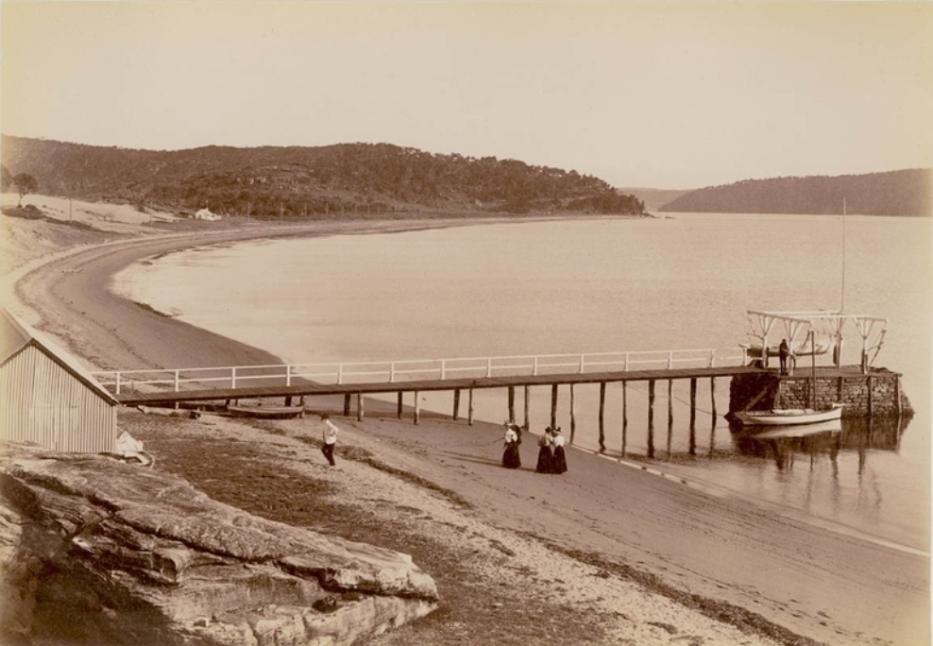
Wharf, Barrenjoey, Hawkesbury River, 1900-1910. Pic No: a116421, Courtesy of The State Library of NSW
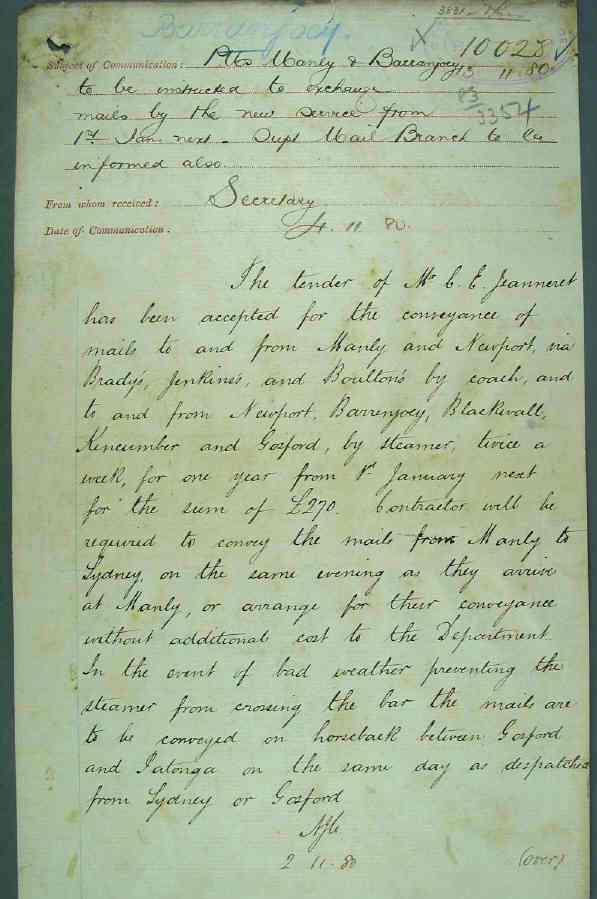
Tender accepted by Charles Jeanneret following year too 2.11.1880 - from National Archives of Australia Barrenjoey Post Office files
Another Jeanneret owned ferry, the Pelican, also frequented Pittwater and became part of the Mail service among other duties;
On the 1st August a party from Government House and the Detached squadron made an excursion up the Hawkesbury and fortunately the weather was so fine that every lovely scene on the river appeared to the best advantage. The Royal Princes were of the party. At an early hour those engaging m the excursion left Man-of war Stairs, and proceeded m the steam launch Nea to Manly, whence they were conveyed by Mr Boulton’s coaches to Newport There they were received by Mr Jeannerett on board the steam launch Pelican. Barrenjuey was passed about 11 o'clock, the boat then proceeded up … THE ROYAL PRINCES IN SYDNEY. (1881, August 11). The Sydney Morning Herald (NSW : 1842 - 1954), p. 9. Retrieved from http://nla.gov.au/nla.news-article13492318
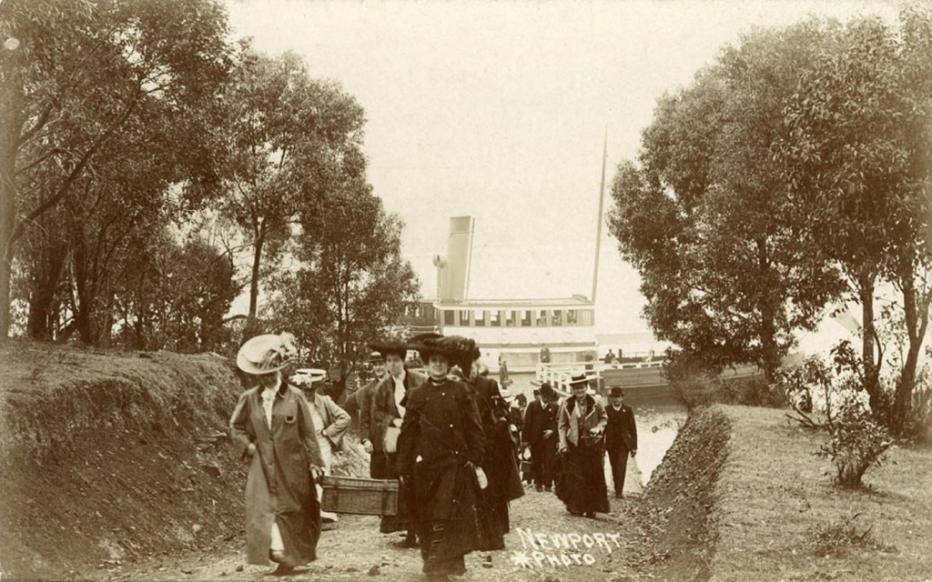
Disembarking at Newport for picnic, circa 1900 (Ferry is the SS Phoenix), Broadhurst image 106125h Courtesy State Library of NSW
The Florrie, outside of official engagements and fulfilling her Government contract, continued as the mail boat and a vessel used for excursions;
The STEAMER FLORRIE, which runs in connection with the coaches from NEWPORT to GOSFORD, will also land passengers and luggage at BARRENJOEE; (Sale of Therry's Careel Bay Estate): Advertising. (1882, July 6). The Sydney Morning Herald (NSW : 1842 - 1954), p. 10. Retrieved from http://nla.gov.au/nla.news-article13514755
Michael Maher, the former engineer on the steamship Florrie, was summoned, by Mr. C. E. Jeannerett, the owner of the vessel, for having, on the Hawkesbury River, on the 30th September, by drunkeness, so neglected the engine of the vessel as to endanger her. The vessel was at Newport, Pittwater, on the 30th September, having onboard the Hon. W. A. Brodribb and eight other passengers. 'the speed of the vessel was very irregular, sometimes being very fast, at other times only two or three knots an hour, and occasionally the engine stopped working ; at times there was only 40lb. of steam, and at other times there was 70lb. ; the engineer was observed to frequently go up and down from the engine-room to the deck ; a stoppage was made at Wiseman's Ferry, and as the passengers after going ashore came aboard the engineer was found lying on the deck helplessly drunk. The party were going to Sackville Reach, but a consultation was held, and it was decided not to proceed until the services of another engineer were obtained. The passengers stayed at Wiseman's Ferry that night, and next day an engineer named G. Brooks was engaged to look after the engine of the vessel. The prisoner was committed for trial. Bail was granted, the prisoner being required to enter into his own bond of £80, and to find two sureties in the sum of £40 each. WATER POLICE COURT. (1882, October 10). The Sydney Morning Herald (NSW : 1842 - 1954), p. 5. Retrieved from http://nla.gov.au/nla.news-article13524784
October sittings of the Metropolitan Quarter Sessions commenced yesterday, before Mr. District Court Judge Josephson, Mr. I. J. Healy prosecuted for the Crown. The only case of importance was one in which a man named Michael Maher was charged with endangering the safety of the steamer Florrie of which vessel he was the engineer, and the passengers on board of her, while on a passage from Newport, Pittwater, to Wiseman's Ferry, on the Hawkesbury River. Not withstanding that the evidence was very strong against the defendant, the jury found him not guilty, and he was discharged. NEWS OF THE DAY. (1882, October 31). The Sydney Morning Herald (NSW : 1842 - 1954), p. 7. Retrieved from http://nla.gov.au/nla.news-article13527380
From the start there seemed a want of sympathy and understanding between the boiler arrangements with moving parts pf the machinery At times the former would make a big spurt, steam would be hissing all about, but the going parts would not respond and while off the pilot-station and in the rolling swell of the Pacific influenced by a stiff southerly breeze, the machinery slowed down sadly, and came to a stand still. But knowing the careful and vigilant inspection exercised by the Government officials at Sydney, no idea of anything amiss stirred amongst those unsuspecting passengers.' Not it that time. The thought was, and that, too, while hammering and bumping were going on about the boiler, that we were waiting for something or other, or somebody from the light-house. And the " Florrie" rolled about, and the ladies began to look as though their tramp over the, Manly-Pittwater sands was not, after all, such a bad style of enjoying a holiday. Then the commander of the "Florrie," with his own hands, shook out and hoisted the jib. Though not much to look at, for the gallant sheet is grimy, and bears evidence of long and wearing service, the jib proved sufficient to turn the prow of the steamer in the direction of the Hawkesbury, and- the engine being started again, the prospect of drifting in an, ebbing tide seawards disappeared. Adventurous Trip to the Hawkesbury. (1883, November 24).Australian Town and Country Journal (NSW : 1870 - 1907), p. 17. Retrieved from http://nla.gov.au/nla.news-article71005969
Some sources state the Florrie served as a Lane Cove River Ferry at some stage in her career; another Jeanneret enterprise. Mr Jeanneret had entered public life serving as an Alderman, Mayor and eventually an MP as member for Carcoar (rural NSW). His wide range of interests, accruing assets, and some say debts owing to an innate generosity to those in need, plus attending to the needs of a large family, made him privy to or seeking opportunities elsewhere (1.);
Sailed —Florrie, for Adelaide, via Wollongong. The steamer Florrie, one of the four boats selected for Mr. Jeanneret's new service at Port Adelaide, sailed for South Australia via Wollongong today. She will be followed tomorrow by the Promise, the Defiance, and the Petrel.NEW SOUTH WALES. (1888, March 27). The South Australian Advertiser (Adelaide, SA : 1858 - 1889), p. 5. Retrieved from http://nla.gov.au/nla.news-article36428802
Four small steamers have been fitted out here for the contract Mr. Jeanneret has with the South Australian Government to perform Customs and other services, and the landing of mails at Largs Bay, It is intended to dispatch the vessels in company at the beginning of next week, so as to be in time to commence the new contract on April 1. NEW SOUTH WALES. (1888, March 17). The South Australian Advertiser (Adelaide, SA : 1858 - 1889), p. 5. Retrieved from http://nla.gov.au/nla.news-article36428343
Charles Jeanneret sold his entire fleet, aside from those in South Australia, in 1890 to an English company; NEW NOTICES. LEGISLATIVE ASSEMBLY.-TUESDAY, NOVEMBER 20. Mr Garland to move,-That leave have of absence for the remainder of the present session be granted to Charles E. Jeanneret one of the members for Carcoar, who has been compelled to visit England land on urgent private business. NEW NOTICES LEGISLATIVE ASSEMBLY. Friday 16 November 1888. Sydney Morning Herald.
ADELAIDE, FRIDAY Mr Jeanneret, late member for Carcoar, arrived by the Liguria this morning, and proceeds from Melbourne on Mondav to his electorate by special tram. MR. GARRETT AT CAMPBELLTOWN. (1889, February 2). The Sydney Morning Herald(NSW : 1842 - 1954), p. 12. Retrieved from http://nla.gov.au/nla.news-article13712748.
The Florrie’s duties in South Australia, aside from those on Government contract, were running to and from Port Germein and Port Pririe;
OUTPORTS. Port Augusta, November 26. Arrived-Investigator, steamer (Adelaide Steamship Company), West, from Port Adelaide via gulf ports. Cargo-General.- ‘Florrie,' steamer, Kerrison, from. Port Pirie, with Macintyre, lighter, in tow. ' Sailed-Investigator, 'steamer, for Port Adelaide. via Ports Germein and Pirie. Cargo-Wool and general. Florrie, steamer, for Port Pirie. Port Pirie, November 27. SHIPPING NEWS. (1901, November 28). The Advertiser(Adelaide, SA : 1889 - 1931), p. 6. Retrieved from http://nla.gov.au/nla.news-article4887753
SHIPPING NEWS. CAPE BORDA. The steamer Florrie left here on Sunday with the Port Germein cricketers and others for a trip to Port Augusta. A cricket match was played at Port Augusta between the local team and Port Germein, .the scores being - Port Augusta 177; Port Germein, 59.- PORT GERMEIN. (1903, January 29). The Advertiser (Adelaide, SA : 1889 - 1931), p. 7. Retrieved fromhttp://nla.gov.au/nla.news-article4919992
PORT AUGUSTA. June 28. The Broken Hill team of footballers arrived here from Port Pirie in the steamer Florrie yesterday morning, and were met on the wharf by a large crowd of local-athletes and others. The president of the Port Augusta Football Club (Mr. J.Bsalton) met the team and conducted them to the Town Hall, where a formal reception had been arranged. The council chamber was we'll filled with the visitors and townsfolk. The visitors, who thoroughly enjoyed the trip, left for Port Pirie by the steamer this morning. PORT AUGUSTA. (1899, July 8). Chronicle (Adelaide, SA : 1895 - 1954), p. 4. Retrieved from http://nla.gov.au/nla.news-article87201876
The Mayor of St. Peters and members of the council with their wives paid a visit to the Outer Harbor on Thursday after-noon. The work in progress was inspected under the guidance of Mr. Rogers. After-noon tea was provided by the mayoress, and the outing was thoroughly enjoyed. The Government were thanked for placing the steamer Florrie at the disposal of the party. PERSONAL. (1907, April 13).The Advertiser (Adelaide, SA : 1889 - 1931), p. 8. Retrieved from http://nla.gov.au/nla.news-article5061851
THE MAYORESS' BELGIAN FUND. —Port Adelaide.—Amount previously acknowledged, £99 1/; collected by Sammy Lunn-S.S. Florrie, 8th instalment, 5/1; Mrs. Sloane, 10/; Mr. W. Tait. £5; proceeds of concert held in Groom's Hall, Peterhead, on 3rd inst., per Miss Bessie Jenkins, £13:total. £117 16/tl. THE MAYORESS' BELGIAN FUND. (1915, March 9). The Register (Adelaide, SA : 1901 - 1929), p. 6. Retrieved November 1, 2012, from http://nla.gov.au/nla.news-article60743470
A pioneer of this region was her captain in South Australia: William Thomas Swiggs (born 21/4/1854), served as a councillor for the Birkenhead Council in 1882. He was also Captain of the steamer Florrie at Port Pirie.
The threads for this lady disappear mid 1920. Some sources state she was broken up in 1931, a mere 52 years old. Other sources state she was converted to a tug and utilised in Port Augusta.
|
|
SS Florrie Threads Collected and Collated by A. J. Guesdon, 2012.